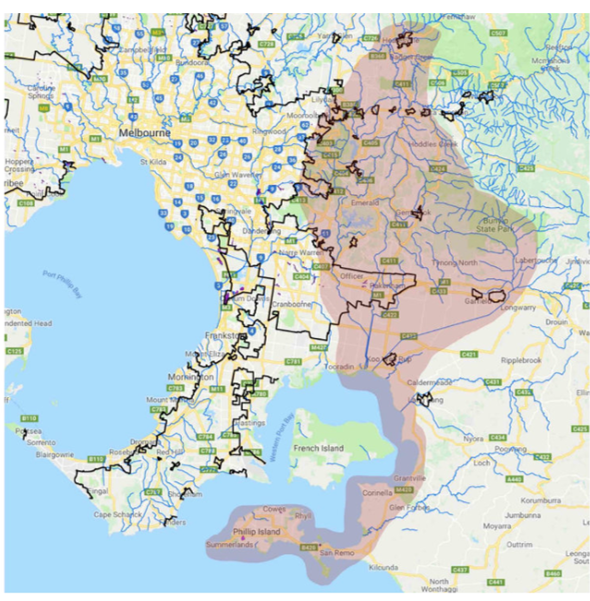A biolink of national significance connecting three of Victoria’s iconic ecotourism attractions
The goal of the Healesville to Phillip Island Nature Link (HPLN) is to create a biolink of national significance connecting three of Victoria’s iconic ecotourism attractions (Healesville Sanctuary, Puffing Billy and Phillip Island Nature Parks) via natural corridors on public and private land.
The HPNL is designed to mitigate threats to our natural and cultural assets including some of our most loved and iconic plants, animals and places.
Continuous links from the internationally-recognised Western Port Biosphere Reserve and Ramsar-listed coastline and wetlands right up to the montane Ash forests of the Yarra Ranges will provide refuge and allow species to migrate through different elevations as habitats transform over time.
The rapid pace of urban expansion in the area is a major threat to the preservation of remnant vegetation and wildlife but also provides an opportunity to ensure a better future for the environment and humans alike. Environmental offsets from developments, including the possible new airport at Monomeith, are one of a number of potential funding sources which could facilitate necessary investment and ensure success.

Themes and Local Areas
| Primary Theme: | Native vegetation |
| Other Themes: | Native animals, Waterways, Communities |
| Primary Local Area: | Casey, Cardinia & Baw Baw |
| Other Local Areas: | Yarra Ranges & Nillumbik, Bass Coast, South Gippsland & islands |
| Project location: | Healesville to Phillip Island |
| Scale of the project: | Landscape |
| New or continuing work: | New project/work |
Project partners
| Lead organisation: | Healesville to Phillip Island Nature Link Inc. |
| Key partners: | Western Port Biosphere, Cardinia Environment Coalition, Melbourne Water, Tooradin Business Association |
| Registered Aboriginal Party/s relevant to the project or its area: | Wurundjeri Woi Wurrung Cultural Heritage Aboriginal Corporation, Bunurong Land Council Aboriginal Corporation |
Investment opportunities
| Opportunities for investors within this project start from: | TBD |
| Estimated scale of investment for full project implementation: | TBD |
| Estimated timeframe for full project implementation: | 10+ years |
Contribution toward targets
| Primary Regional Catchment Strategy target: | Major new biolinks – Significant, sustained revegetation programs have been undertaken from 2021 to 2050 and have created numerous major biolinks in priority locations across the region |
| Relevant Biodiversity 2037 goal: | Revegetation of priority areas for connectivity between habitats |
| Relevant National Landcare Program priority: | Soil, biodiversity and vegetation – Projects that will protect and enhance on-farm remnant native vegetation |


